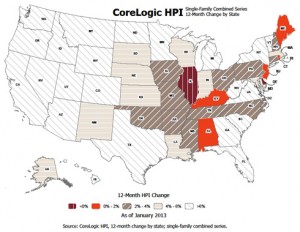From the APP:
NJ’s 2012 job growth was strongest in a dozen years, despite Sandy
New Jersey’s job market withstood the shock of superstorm Sandy in 2012 to post its strongest annual growth since the waning days of high-tech bubble more than a decade ago, the state reported Monday.
The gain required no small portion of resourcefulness from workers, particularly at the Shore, where they battled floods and power outages last fall simply to stay in business.
“Really, we formed, like, a little family,” said Andrea Canton, a hair stylist who moved into S&G Hair Studio in Point Pleasant Beach after her own salon in the borough was severely damaged. “Everybody was leaning on everybody, trying to get back to normal.”The report by the U.S. Bureau of Labor Statistics is part of annual revision process that it calls benchmarking, providing a more accurate look at the labor market than the preliminary results it releases each month.
…
New Jersey had been lagging the nation since the recession ended. But the state last year added 66,400 jobs – 59,100 in the private sector and 7,300 in the public sector – keeping up with the pace of job growth nationwide. It was the strongest year since the state added 76,800 jobs in 2000.The unemployment rate at the end of 2012 was 9.5 percent, still higher than U.S. jobless rate of 7.8 percent.
January’s figures, also released on Monday, showed the state returned to modest growth. It added 2,600 jobs, and its unemployment rate remained at 9.5 percent.
“It turns out that 2012 was a much better year than we had originally thought,” said James W. Hughes, an economist and dean of the Edward J. Bloustein School of Planning and Public Policy at Rutgers University.
…
Either way, economists said New Jersey has a long way to go before it fills the hole left by the collapse of the housing bubble. The state has recovered fewer than half of the 241,000 private-sector jobs it lost during the recession, Hughes said.


